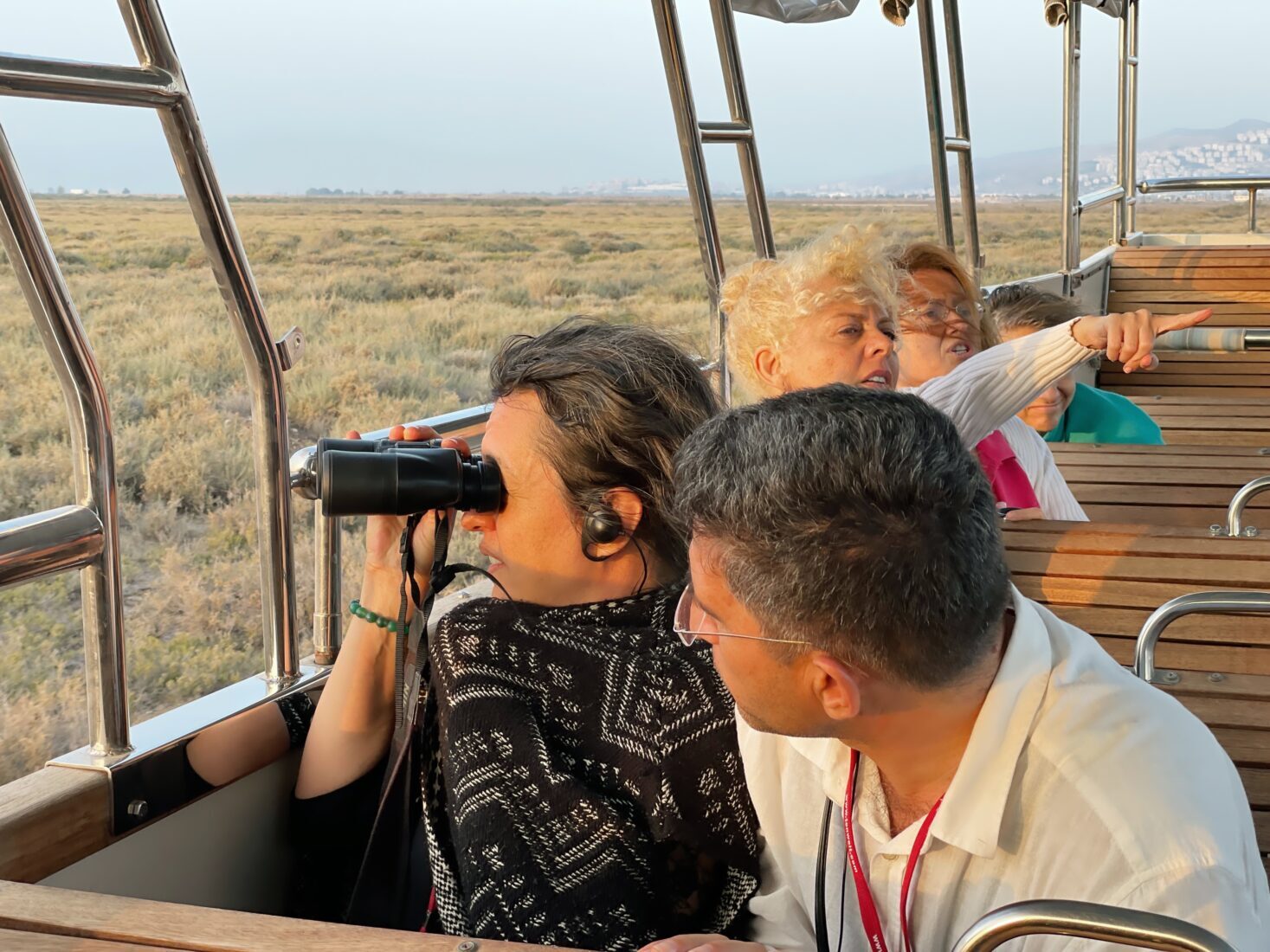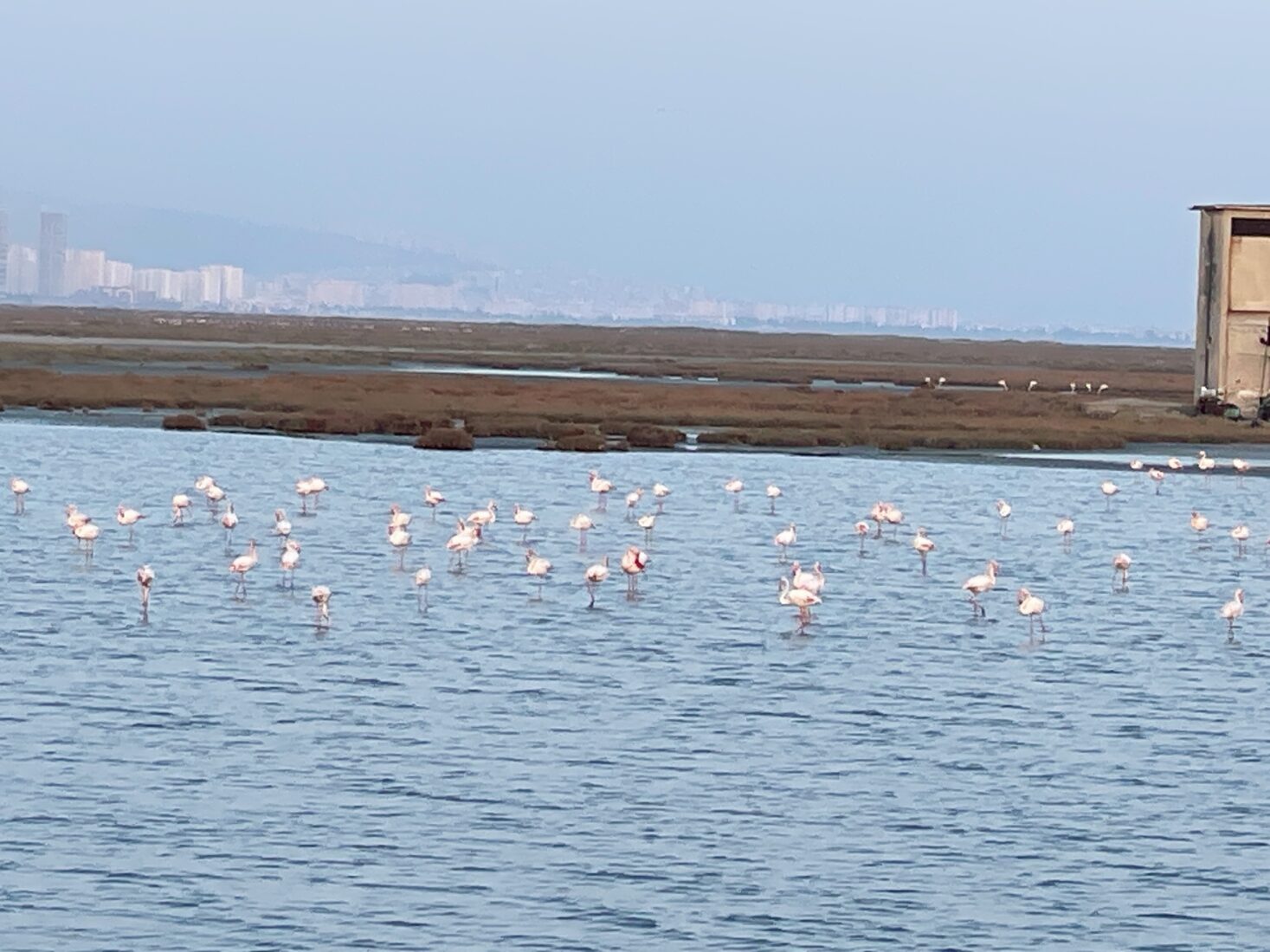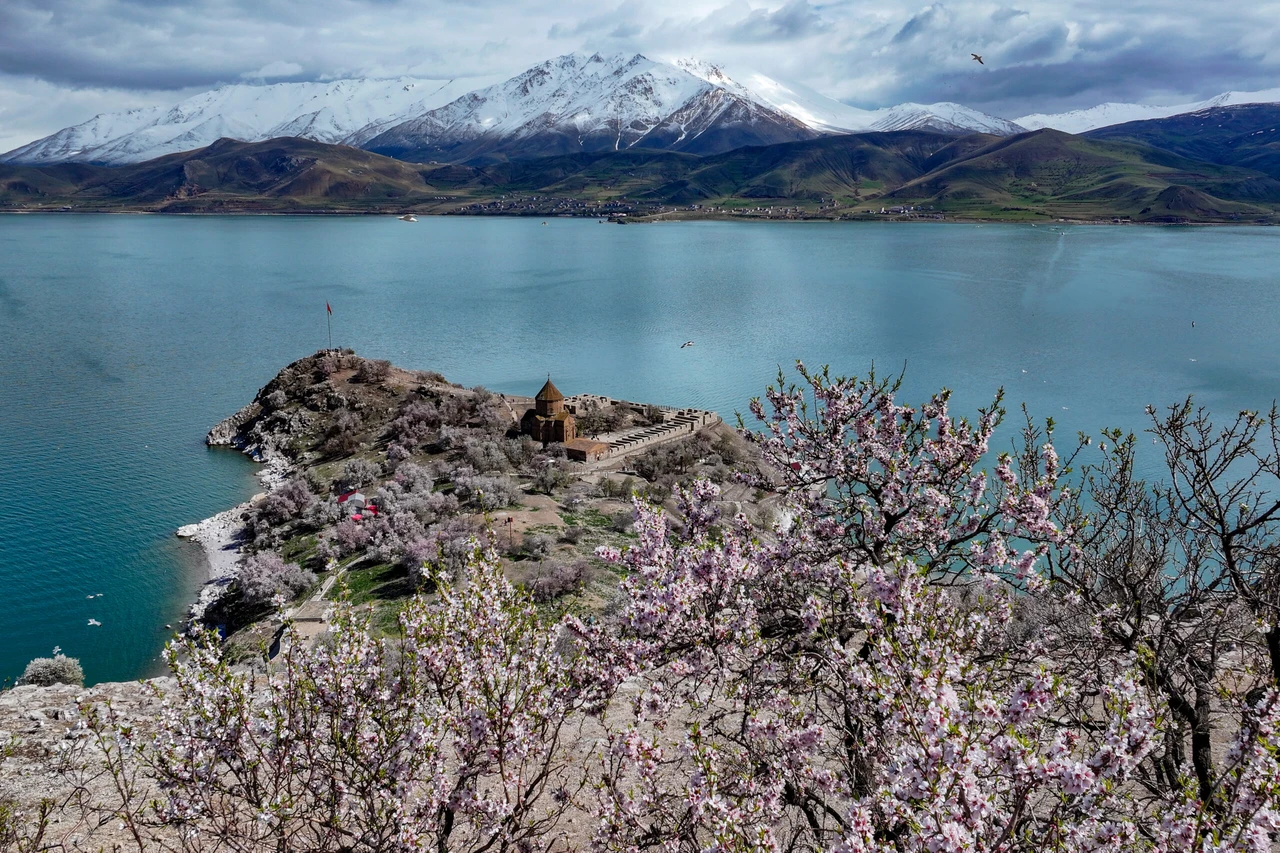Gediz Delta’s global importance and unique biodiversity in heart of Izmir
 Türkiye Today editor Koray Erdogan spends a day in Gediz Delta, in Izmir, Türkiye, Oct. 6, 2023. (Photo by Koray Erdogan/Türkiye Today)
Türkiye Today editor Koray Erdogan spends a day in Gediz Delta, in Izmir, Türkiye, Oct. 6, 2023. (Photo by Koray Erdogan/Türkiye Today)
Izmir’s Gediz Delta stands out for its biodiversity and international importance. In 2019, this area, which is home to thousands of species, applied to be included in the UNESCO World Natural Heritage list.
So, what do we know about the history, geography, and biological diversity of Gediz Delta? Let’s take a closer look at this unique natural wonder.
What is historical and international significance of Gediz Delta?
Gediz Delta, located in the heart of Izmir, is one of the rare wetlands globally recognized as an Important Natural Area and an Important Bird Area.
Meeting the UNESCO World Natural Heritage criteria, the delta applied for inclusion in this list in 2019. Approximately 10% of the world’s flamingo population resides in the Gediz Delta. It also hosts endangered species such as the Mediterranean monk seal and the Caretta caretta sea turtle.
Although protected by national and international laws, it is considered one of the 255 Most Endangered Important Bird Areas on Earth.

What is geographical structure of Gediz Delta?
Gediz Delta is an extensive wetland system formed at the point where the Gediz River meets the sea on the western coast of the Gulf of Izmir. The delta is bordered by Yamanlar Mountain to the east and southeast, Dumanlidag to the northeast, and Foca Hills to the north.
The coastal area of the delta features lagoons, salt marshes, and salt flats, while the interior contains vast agricultural fields and low hills. This geographical diversity supports the richness and variety of ecosystems within the delta.

What habitats and land uses exist in Gediz Delta?
Gediz Delta hosts various habitats encompassing saline, freshwater and brackish water ecosystems. The majority of the delta’s sea boundary consists of sand bands covered with sea purslane and mussel shells, while the interior areas include lagoons, salt meadows, and temporary wet meadows.
Additionally, there are extensive agricultural areas, afforestation zones and orchards. The delta serves as an essential feeding and breeding ground for economically valuable fish species.
Homa Lagoon is operated by Ege University’s Faculty of Fisheries for fish production. About 600,000 tons of salt are produced annually at Camalti Saltpan.

What is biological diversity like in Gediz Delta?
Gediz Delta holds significant importance for bird biodiversity. To date, 298 bird species have been observed within the delta. Species such as the Dalmatian pelican, lesser kestrel, black-winged stilt and flamingo breed within the delta.
It also serves as an important wintering and stopover site for waterbirds coming from Eastern Europe. Among the mammalian wildlife are species like the jackal, fox, wild boar, and Mediterranean monk seal. The delta is also crucial for freshwater fish, with the endemic species Ladigesocypris irideus being protected here.
Delta Cafe, a newly opened gathering spot, offers visitors to Izmir Bird Paradise information about the Gediz Delta and its inhabitants before they begin their observation activities. The cafe is equipped to meet visitors’ needs for food, beverages, rest, and observation tools such as hats, binoculars, books, brochures, and maps. Most products sold here are sourced from local cooperatives in Izmir, supporting local producers.

The seminar room hosts briefings on the area’s biodiversity for visitors participating in bus tours.
The future and conservation efforts of Gediz Delta
Despite being safeguarded by various national and international conservation laws, Gediz Delta faces several threats. Intensive agricultural activities, industrial facilities, and military areas in the region can negatively impact the delta ecosystem.
However, conservation and monitoring efforts within the delta are crucial to ensuring the sustainability of this unique natural area. With its unique biodiversity and natural beauty, Gediz Delta is one of the important natural areas that need to be protected in both Turkey and the world.
Gediz Delta, located in the heart of Izmir and of great importance on a global scale, draws attention with its rich biodiversity, different habitats, and economic value. It is a natural wonder that needs to be preserved and sustainably managed in the future.
If included in the UNESCO World Natural Heritage list, stronger international support will be provided for the protection of this unique area, ensuring its transfer to future generations.
How to get there?
After arriving at the Izmir Wildlife Park using bus numbers 777 or 751, you can rent a bike via the Bisim Smart Bicycle system or join our Flamingo Road bus tour to reach the Middle Gediz Delta.



